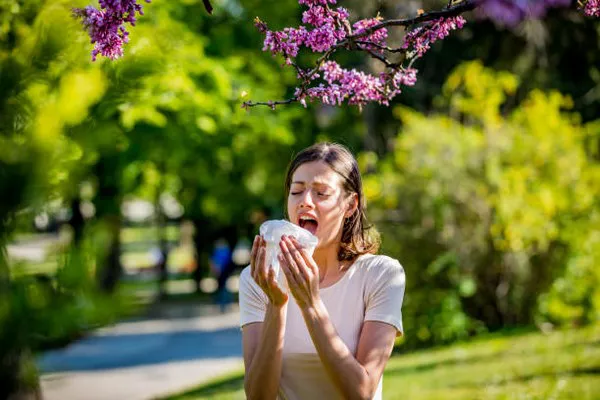As the seasons change and nature awakens, many individuals find themselves amidst a familiar struggle—the battle against seasonal allergies. Pollen, a microscopic yet potent force released by blooming plants, becomes a major culprit in triggering allergic reactions. This article aims to delve into the intricacies of what blooms are causing allergies, exploring the types of allergens present, and offering insights into managing seasonal allergies for a more enjoyable and comfortable life.
Flower Allergy Culprits
Understanding Pollen Types
Pollen, the fine powder produced by flowering plants for reproductive purposes, is a common airborne allergen responsible for seasonal allergies. Different plants release pollen at different times of the year, contributing to distinct allergy seasons. The primary types of allergenic pollen come from trees, grasses, and weeds.
Tree Pollen:
Spring often brings the release of tree pollen. Trees such as oak, birch, cedar, and pine contribute to the pollen cloud in the air, triggering allergies in susceptible individuals.
Grass Pollen:
Late spring into early summer witnesses the prevalence of grass pollen. Common grasses like Bermuda, Timothy, and Kentucky bluegrass release pollen that can cause allergic reactions.
Weed Pollen:
Late summer and fall are marked by the release of weed pollen. Ragweed, sagebrush, pigweed, and lamb’s quarters are notorious for triggering allergies during this season.
See Also: 6 Common Spring Allergies, Causes, Symptoms & Management
Floral Offenders
While trees, grasses, and weeds are the primary culprits, certain flowering plants can also contribute to allergy symptoms. These plants typically rely on insects for pollination, but their pollen can still be problematic for allergy sufferers.
Ragweed:
Despite being a weed, ragweed deserves a special mention due to its highly allergenic pollen. A single ragweed plant can release billions of pollen grains, causing widespread allergies.
Alder and Birch Trees:
Trees like alder and birch produce pollen that can contribute to springtime allergies, adding to the pollen mix in the air.
Allergies Unveiled: How Pollen Triggers Reactions
Immune System Response
When individuals with pollen allergies come into contact with airborne pollen, their immune systems mistakenly perceive it as a threat. In an attempt to fend off this perceived invader, the immune system releases histamines and other chemicals, leading to the classic symptoms of allergies.
Sneezing and Runny Nose:
The body’s response to the presence of allergens includes sneezing and a runny or stuffy nose. These actions are attempts to expel the irritants from the nasal passages.
Watery Eyes:
Histamines can cause blood vessels in the eyes to dilate, leading to watery and itchy eyes—an uncomfortable hallmark of allergic reactions.
Itchy Throat and Ears:
Irritation of the throat and ears may occur as the immune system reacts to the perceived threat, prompting uncomfortable sensations.
Fatigue:
The body’s immune response can be draining, leading to feelings of fatigue and lethargy in individuals with pollen allergies.
Managing Allergies: Strategies for Relief
Understanding Pollen Counts
One effective strategy for managing allergies is to stay informed about pollen counts. Many weather services provide daily pollen forecasts, indicating the concentration of different types of pollen in the air. On days when pollen counts are high, individuals with allergies can take precautionary measures to minimize exposure.
Practical Tips for Allergy Management
Monitor Pollen Forecasts:
Regularly check local pollen forecasts to plan outdoor activities on days with lower pollen counts.
Stay Indoors During Peak Times:
Pollen concentrations are often highest in the early morning and late afternoon. Limit outdoor activities during these peak times to reduce exposure.
Use Air Purifiers:
Invest in air purifiers with HEPA filters to reduce indoor pollen levels and create a more allergy-friendly environment.
Keep Windows Closed:
During peak allergy seasons, keep windows closed to prevent outdoor pollen from entering indoor spaces.
Practice Good Personal Hygiene:
Shower and change clothes after spending time outdoors to remove any pollen clinging to your body or clothes.
Pharmacological Options
For individuals with more severe allergies, pharmacological interventions can provide relief. Over-the-counter antihistamines, decongestants, and nasal corticosteroids are commonly used to alleviate symptoms. It’s advisable to consult with a healthcare professional before starting any medication regimen.
Immunotherapy: Long-Term Relief
For those seeking long-term relief, allergen immunotherapy, commonly known as allergy shots, may be considered. This treatment involves regular injections of allergens, gradually desensitizing the immune system and reducing allergic reactions over time.
Looking Ahead
As our understanding of allergies deepens, researchers are exploring innovative approaches to allergy management. From targeted medications to advanced immunotherapy techniques, the future holds promising developments for individuals battling seasonal allergies.
In conclusion, understanding what blooms are causing allergies empowers individuals to take proactive steps in managing their symptoms. By staying informed, practicing preventive measures, and exploring appropriate treatments, individuals can navigate allergy seasons with greater ease and enjoy the beauty of nature without the discomfort of allergic reactions.


